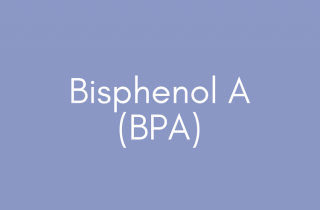1,3-Butadiene
What is 1,3-butadiene?
1,3-butadiene is an air pollutant that humans are most commonly exposed to through inhalation.[4]
Where is 1,3-butadiene found?
Traces of 1,3-butadiene can be found in plastics, fuel and water. It is also released into the atmosphere through diesel and gasoline exhaust as well as tobacco smoke.[5]
What evidence links 1,3-butadiene to breast cancer?
Over time, 1,3-butadiene interacts with other chemicals in the environment and breaks down into the metabolites (breakdown products) such as epoxybutene (BMO). These metabolites can attach to DNA, beginning the process of tumor formation.[6]
- A study done on rats and mice found that females exposed to 1,3-butadiene by inhalation experienced a higher incidence of mammary gland tumors. These females also experienced a higher mortality rate.[7]
Who is most likely to be exposed to 1,3-butadiene?
Everyone is exposed to 1,3-butadiene, but industrial workers involved in its production are exposed to the highest concentrations. Regions that have high levels of vehicle exhaust fumes in the air, such as cities, are also exposed at higher rates.[8]
Who is most vulnerable to the health effects of 1,3-butadiene?
Research conducted on animals suggests that women may be most vulnerable to the effects of 1,3-butadiene.[9]
What are the top tips to avoid exposure?
- Workers should wear respirators when exposed to 1,3-butadiene.[10]
- Everyone should avoid cigarette smoke.[11]
Reviewed 2019
[1] Agency for Toxic Substances & Disease Registry. “Toxic Substances Portal: 1,3-Butadiene.” Last modified March 3, 2011. http://www.atsdr.cdc.gov/substances/toxsubstance.asp?toxid=81.
[2] National Toxicology Program. “Toxicology and Carcinogenesis Studies of 1,3-Butadiene (CAS No. 106-99-0)” Report on Carcinogens, Fourteenth Edition. Research Triangle Park, NC: U.S. Department of Health and Human Services, Public Health Service, 2016. http://ntp.niehs.nih.gov/ntp/roc/content/profiles/butadiene.pdf. Accessed October 20, 2020.
[3] U.S. Environmental Protection Agency (EPA). “Health Assessment of 1,3-Butadiene.” National Center for Environmental Assessment, Washington, DC: EPA/600/P-98/001F. Available from: National Technical Information Service, Springfield, VA, http://www.epa.gov/ncea/, 2002. https://cfpub.epa.gov/ncea/iris/iris_documents/documents/supdocs/butasup.pdf. Accessed October 20, 2020.
[4] U.S. Environmental Protection Agency (EPA). “Health Assessment of 1,3-Butadiene.” National Center for Environmental Assessment, Washington, DC: EPA/600/P-98/001F. Available from: National Technical Information Service, Springfield, VA, http://www.epa.gov/ncea/, 2002. https://cfpub.epa.gov/ncea/iris/iris_documents/documents/supdocs/butasup.pdf. Accessed October 20, 2020.
[5] National Toxicology Program. “Toxicology and Carcinogenesis Studies of 1,3-Butadiene (CAS No. 106-99-0)” Report on Carcinogens, Fourteenth Edition. Research Triangle Park, NC: U.S. Department of Health and Human Services, Public Health Service, 2016. http://ntp.niehs.nih.gov/ntp/roc/content/profiles/butadiene.pdf. Accessed October 20, 2020.
[6] Melnick, R. L., & Kohn, M. C. “Mechanistic data indicate that 1,3-butadiene is a human carcinogen.” Carcinogenesis 16, 2 (1995): 157-163. doi:10.1093/carcin/16.2.157.
[7] Melnick, R L et al. “Multiple organ carcinogenicity of inhaled chloroprene (2-chloro-1,3-butadiene) in F344/N rats and B6C3F1 mice and comparison of dose-response with 1,3-butadiene in mice.” Carcinogenisis 20(5) (1999): 867-878. doi:10.1093/carcin/20.5.867.
[8] National Toxicology Program. “Toxicology and Carcinogenesis Studies of 1,3-Butadiene (CAS No. 106-99-0)” Report on Carcinogens, Fourteenth Edition. Research Triangle Park, NC: U.S. Department of Health and Human Services, Public Health Service, 2016. http://ntp.niehs.nih.gov/ntp/roc/content/profiles/butadiene.pdf. Accessed October 20, 2020.
[9] Melnick, R L et al. “Multiple organ carcinogenicity of inhaled chloroprene (2-chloro-1,3-butadiene) in F344/N rats and B6C3F1 mice and comparison of dose-response with 1,3-butadiene in mice.” Carcinogenisis 20(5) (1999): 867-878. doi:10.1093/carcin/20.5.867.
[10] Occupational Health and Safety Administration. “Occupational Safety and Health Topics: 1,3-Butadiene.” Accessed October 20, 2020. https://www.osha.gov/SLTC/butadiene/solutions.html.
[11] National Toxicology Program. “Toxicology and Carcinogenesis Studies of 1,3-Butadiene (CAS No. 106-99-0)” Report on Carcinogens, Fourteenth Edition. Research Triangle Park, NC: U.S. Department of Health and Human Services, Public Health Service, 2016. http://ntp.niehs.nih.gov/ntp/roc/content/profiles/butadiene.pdf. Accessed October 20, 2020.






